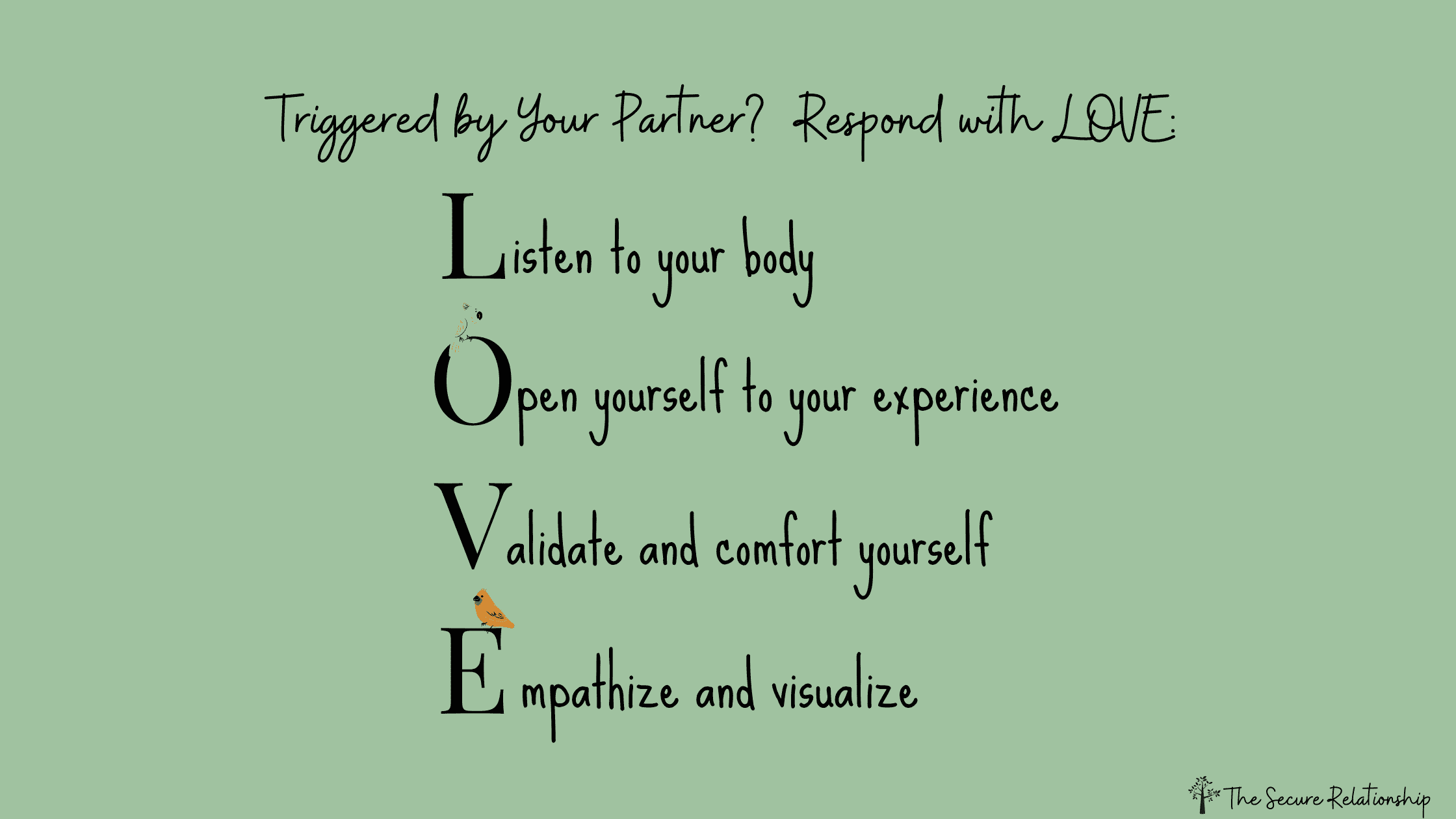Triggered by Your Partner? Respond with LOVE
You Can’t Control the Trigger—But You Can Control the Response
We all get triggered.
It might be something your partner says.
Or doesn’t say.
A facial expression.
A forgotten detail.
A tone.
Before you know it, you’re flooded with emotion—frustration, panic, shutdown, defensiveness—and the urge to react takes over.
But there’s a way to pause, regulate, and respond instead of react.
That’s where L.O.V.E. comes in.
L.O.V.E. = Listen, Open, Validate, Empathize
This simple tool helps you shift out of a triggered state and into your best self—so you can respond with emotional clarity, not emotional chaos.
L — Listen to your body
First, notice the trigger.
Do you feel tension rising? A knot in your stomach? A rush of heat?
Do you hear yourself thinking, “Why are we talking about this again?”
Do you feel anger, sadness, fear, or shame start to surge?
Whatever it is—notice it.
Awareness is the first step toward doing something different.
Just checking in gives you a small but powerful space between the trigger and your reaction.
O — Open yourself to your experience
Allow your experience to exist. Don’t fight your feelings.
Ask yourself:
What’s happening in my body?
What feelings are rising up?
What meaning am I making of what they did or said?
What thoughts are racing through my mind?
What do I feel the urge to do?
This is how you move from reactivity to self-awareness.
V — Validate and comfort yourself
Be your own support system.
Tell yourself what you wish someone else would say:
“It’s okay to be upset. My feelings make sense.”
“This is one of those moments when relationships feel really hard.”
“It feels like the end of the world, but it’s not. I’m going to be okay.”
“How about I take a few breaths?”
Even small self-validation helps shift your nervous system into a softer, calmer space.
E — Empathize and visualize
Step into your partner’s shoes.
Ask yourself:
What might be going on with them right now?
What stress or emotion could they be carrying?
Can I find a way to make sense of their experience, even if I don’t like it?
Then pause to visualize how your highest self would handle the situation.
“How would the person I want to be respond right now?”
“What do I want this moment to feel like afterward?”
Visualize your next move. Then, when you’re ready—make it.
What Now?
Now that you’ve softened, shifted, and reconnected with your intentions... what do you want to do?
Share how you’re feeling?
Set a boundary?
Make a repair?
Validate your partner?
Ask for comfort—or offer it?
Say nothing for now and wait until you’re more grounded?
There’s no right move—only a better place to move from.
This post isn’t about finding the perfect words.
It’s about finding a calmer nervous system—so that your words come from a clearer, softer place.
Will It “Work”?
If by “work” you mean:
Improve the emotional environment of your relationship?
Strengthen your relationship with yourself?
Yes.
It works—when practiced consistently.
But if “work” means your partner will always respond how you want them to…
No.
There’s no tool that guarantees control over someone else.
But that’s not the goal.
Good communication isn’t about getting what you want.
It’s about building a relationship worth being in.
Related Resources
Attachment 101 Course – Understand how your triggers relate to attachment wounds and how to respond with emotional awareness
Understanding Shame Workshop – Learn how shame shows up during triggers and how to move through it without spiraling
Relationship Coaching – Get personalized support for navigating reactivity, triggers, and communication breakdowns
Julie’s Bi-Weekly Group – Explore tools like L.O.V.E. and co-regulation in a live, supportive space with Julie
Secure Love Book – Read more about how to regulate during conflict, reconnect after rupture, and stay grounded in secure connection
“Good communication isn’t about manipulation—it’s about having good relationships.”



In this episode of Let’s Talk Love, Robin sits down with therapist, author, and attachment expert Julie Menanno to explore how we can create relationships that feel safe, connected, and enduring.